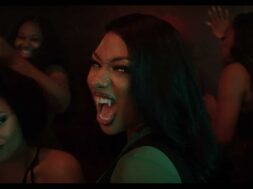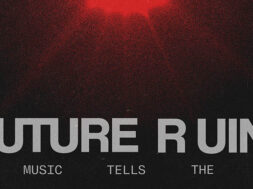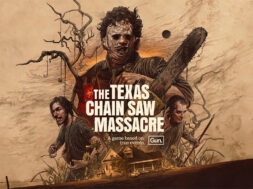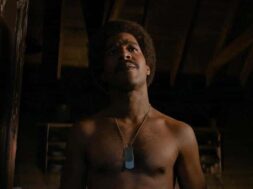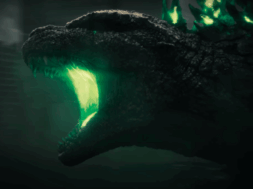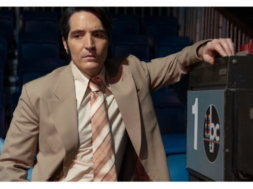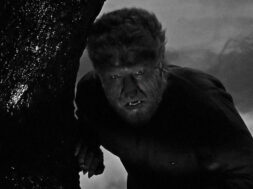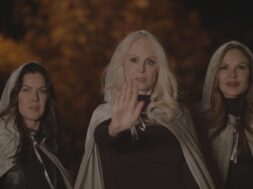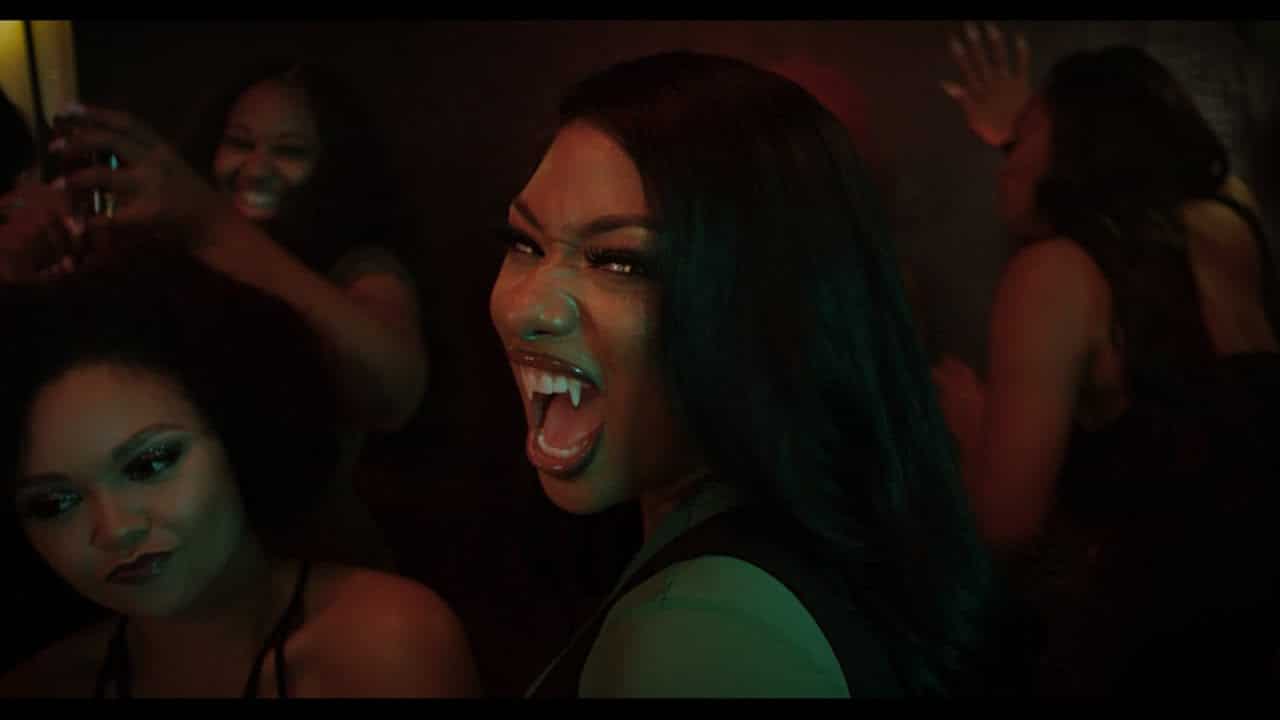
So much of the beauty and power of horror is in the language the genre gives us to navigate the darker, more painful aspects of human existence. Obviously, this has never been limited to horror films. Michael Jackson changed the music industry in 1982 when he embraced the music video as a cinematic form. He hired the director of An American Werewolf in London to help him make a postmodern horror short, and unleashed “Thriller” upon the world. Visionary that he was, he also transformed the relationship between horror and pop music.
With influence taken from ‘50s monster movies, Jackson tapped into the genre’s preoccupation with puberty and the liminal (The Exorcist, Carrie) and put these associated motifs to work, establishing horror as a kind of thematic bridge for artists transitioning between eras. As such, everyone from the Backstreet Boys to Taylor Swift to Olivia Rodrigo has used horror imagery to narrate their reinvention or exact some symbolic revenge or another. But the story is different when narrated by Black women in these spaces.
Southern Gothic is a sound as much as a literary tradition and visual language. For Black women singing the Blues, the music and its performance were a space that could hold the multifaceted nature of the Black experience: where pleasure, joy, and mischief could brush against terror, violence, and melancholy and be held in their simultaneity.
The folkloric nature of the Blues, its telling of tall tales, sexual escapades and love affairs gone awry, indicate the sort of puberty folks were experiencing in the late nineteenth/early twentieth century as a result of emancipation. But it’s also indicative of the ways Black women have always resisted the violence of racialized respectability politics by embracing our sensuality—a tradition carried on by Black women in music today.
Nicole R. Fleetwood and Dr. Zalika U. Ibaorimi have both written on the evolution of Rihanna’s public image as it was impacted and shaped by her relationship with Chris Brown and his 2009 assault. Fleetwood charts the “commingling” of “sexual pleasure and pain, erotic desire and violence” that have since been consistent themes in Rihanna’s performance of celebrity, the tensions of which have troubled perceptions around victimhood and revealed troubled perceptions of what a victim should look/act like in the same movement.
She describes how the artist and her team “[cultivated] a deliberate image and sound…that incorporated acts of violence in intimate relations and sexual practices, at times explicitly referencing her relationship with Brown and the psychic and physical injuries resulting from it…. The singer’s strategy of incorporation, instead of denying or minimizing the incident, served as a highly successful commercial venture that has only increased her appeal and success as a mainstream pop star.”
Bad Gyal Riri as we know her today, was born of this impulse to lean into the lexicon of horror- blood and lace, addiction and adoration, vengeance as justice- as part of her performance in the aftermath of the assault. From the blood Brown spilled emerged a complicated, at times unfathomable public persona who Ibaorimi, writing on Rihanna and “Deathly Desire,” describes as having “found pleasure in” the interplay of violence and eroticism.
Ibaorimi notes how “Women who are articulated as sexually promiscuous in films often have more gruesome or grotesque deaths,” referring to the Sluts Always Die trope. She goes on to ask, “How do issues concerning moral citizenship within Blackness impact the trope of ‘whores’ deserving to die in horror?” Put another way, how do “issues concerning moral citizenship” inform the existence of the trope? In what ways does it reflect the pre-existent bias and belief that women “articulated as sexually promiscuous” are somehow deserving of brutality?
Whether you occupy the role of victim, victimizer, or witness, misogyny in general and racialized misogyny (misogynoir) in particular makes such violence an inevitable part of existence for everyone. Which is why rebirth in the aftermath of brutality has been a core consideration within Black feminist literature for centuries, and is concurrently also one of horror’s most primary themes. From The Last House On The Left to Jennifer’s Body, the entire rape revenge category grapples with the terror of who or what a woman becomes after experiencing life-altering, explicitly patriarchal violence, thus making it the entry point for the majority of feminist approaches to the genre. Remember the video for “BBHMM”?
Which brings us to Meg. Those who’ve been paying attention already know Megan Thee Stallion’s no stranger to horror. From referencing A Nightmare On Elm Street’s infamous bathtub scene in the music video for “Thot Shit” to her iconic Greta (Gremlins 2) costume, Meg has always been clear that horror is real hot girl shit.

But as we all know, it’s one thing to revel in the figurative window dressing the genre has to offer and another entirely to experience its themes- terror, violence, dread, monstrosity, grief, suffering- in your actual life. As if the 2019 deaths of her mother and grandmother weren’t enough, the years that followed have been defined by legal action against an exploitative record label as well as a former friend (who thinks drunken shootings are normal Wednesday night behavior), and an associated smear campaign so nasty, it resulted in the recent desecration of her mother’s grave.
When I think about Megan Thee Stallion, I think about Jordan Peele’s Nope: a film about evading the gaze of a hungry predator in which the truest monster is not Jean Jacket, but the nameless, faceless TMZ drone whose camera is its own devouring mouth. Hypervisibility is always a double-edged sword, but that edge is especially sharp for Black women. Mouths water at the prospect of tearing us apart, treating our pain as fodder for countless cheap jokes.
Taylor Crumpton wasn’t wrong when she said that the horrendous treatment of Megan Thee Stallion indicates “the sadistic nature of misogynoir in hip-hop.” For several years now, her body and sexuality have been made the target of continuous, increasingly unhinged, unprovoked attacks, nearly all of which are steeped in colorist, anti-Black rhetoric. So what does a woman do under that kind of pressure? She changes. And what better way to narrate such a transformation than by using one of humanity’s oldest, most enduring symbols: the snake.
Every single global culture has some myth or lore associated with snakes. Impossible to ignore are the ouroboros and the biblical serpent from the Genesis story, the latter of which informs the association between snakes and deception. But they also make for potent symbols of transformational sovereignty. It’s in this tradition that Megan Thee Stallion’s Cobra era unravels, narrating her journey through grief, celebrity, misogynoir, and public consumption in what amounts to a personal mythology of her own devouring.
The music video for “Cobra” opens with Meg’s decontextualized mouth set against a black frame. Her body having been the site of violence, her body being what people project their opinions, insecurities, and convoluted beliefs on, is removed from the equation entirely, a choice that gives spectators nothing to focus on but the words coming out of her mouth: “Just as a snake sheds its skin, we must shed our past over and over again.”

As she speaks, the camera pulls away from her mouth. The bassline drops as her slitted eyes open, staring directly at the audience. She widens her mouth, reveals fangs that drip a venomous golden dew. From this droplet, an Anaconda-sized snake emerges, slithering out of its old skin like one might a dress. The perspective cuts, gazes from inside the snake- a perspective we also saw in Nope– where Meg is crawling on hands and knees out of its mouth, which is also a door.
“Cobra” is a song about the pain of transformation. It’s wildly vulnerable, detailing themes of isolation, betrayal, grief, infidelity, suicidal ideation, and self-destruction in what we know was the aftermath of her familial losses and Lanez’s shooting, including the bizarre backlash she endured in response to his abuse. In the first verse, she raps, “Breaking down and I had the whole world watching/ But the worst part is really who watched me?/ Every night I cried, I almost died/ And nobody close tried to stop me/ Long as everybody getting paid, right?/ Everything will be okay, right?”
Judgment and condemnation are present in equal measure running in both directions, by which I mean, she speaks from the position of both Object and Subject (she looks and is looked at). This is expressed visually in sequences where she confronts the snake as an external threat to be addressed, but in another, she is the snake. Locked like a zoo animal in a glass cage, she peels the skin from her face and body like Marlene Clark in Night Of The Cobra Woman: a spectacle for the eyes of a hungry crowd.
There’s a dissonance the rapper leans into with lines like “this pussy depressed” and “he say I’m crazy/ don’t I know it” that accurately conveys how preposterous violence and its aftermath can be; how the actual experience of it (and the adjacent dissociation) can make things seem weightless but overwrought. Like moving in slow motion underwater, then at lightspeed.
This is to say, you can’t actually make sense out of shit that doesn’t make sense. For a culture that puts reason on a pedestal, shockingly little of it is demonstrated, while incongruity, absurdity, weirdness, hypocrisy, and false equivalencies are everywhere. “Cobra” chronicles what it is to be inside the belly of the serpent as it’s actively eating itself.

By contrast, the follow-up single, “Hiss,” is likely to go down as one of the most venomous diss tracks in history without even technically being a diss track. The rage she merely gestured toward on “Cobra” is fully unleashed on “Hiss.” And while it’s true that a self-proclaimed “monster” may have ate on a single verse 15 years ago, Thee Stallion has since devoured that legacy with two bars and no names mentioned.
Because a whole host of rappers have spent several years misdirecting attention by offering bits of her on a silver platter to an eviscerating public while their own maggot-riddled misdeeds rot in the center of the table, the lashings offered on “Hiss” represent an indelicate reminder that folks’ slips are showing.
To say the entertainment industry has a long and disturbingly decorated history of shielding predators and abusers feels trite at this point. Every word of that sentence could link to an accusation, conviction, or evidence that requires Olympic-level mental gymnastics to refute, and folks would still find some way to vilify victims, often using tropes straight out of horror films. Fleetwood recalls, for instance, how Rihanna, a woman of Caribbean descent, was accused of weaponizing voodoo against Chris Brown to bring about his downfall.
In Mesopotamian myth and Jewish mysticism, Lilith- Adam’s first wife- chose exile from the Garden over submission to masculine subjugation. Over thousands of years of retelling, she’s been depicted in association with demons, vampires, and other nocturnal creatures. But most relevant here is her association with snakes and the biblical serpent. Lilith is among the patron saints of the monstrous feminine, many of whom are snake-women. When Megan sticks her tongue out, I’m immediately reminded of Medusa.
The technology of monsters, in real life, frequently sees the abused called to stop doing harm to their abusers for simply acknowledging that the abuse happened. They’re called to “protect” those who’ve done harm by forfeiting safety for themselves.
In Horror Noire: Blacks in American Horror Films, Dr. Robin R. Means Coleman identifies a trope in ‘70s blaxploitation films that she calls the “Enduring Woman.” Enduring Women are distinguished from Final Girls in that they are “…soldiers in ongoing battles of discrimination, in which a total victory is elusive. The Black woman’s triumphant walk into the sunset promises to take her, not toward a life of peace, but back into the midst of rogue police, sexist men, and ‘The Man’ who is exploiting her Black community.”
Citing films like Foxy Brown, Sugar Hill, Scream, Blacula, Scream!, and Ganja & Hess, Coleman observes how confrontations with the monstrous are rendered a condition of Black life, thus necessitating the almost supernatural resilience of these characters who are indeed frequently written to act primarily in service of their men (Ganja & Hess being a significant departure).

The Enduring Woman offers an answer to Ibaorimi’s question about “issues concerning moral citizenship within Blackness” as reflected in horror films, that the only “good” or “moral” station a Black woman can occupy in society is one of relentless risk and relentless self-sacrifice. I think of this trope every single time I witness someone thrust an impossible expectation upon a Black girl or woman, then sprinkle it with the sugar of an empowerment slant. The inhumanity of it: to be regarded as nothing more than a vehicle for discovery in someone else’s unearned redemption arc.
Rap is a poetic form and direct address is one of its primary techniques. With Cobra, that address is shaping up to be one of refusal. To be a Black woman perceived by society and a human being like anyone else, in the strange alchemy of existence, seems to necessitate our embrace of the very thing everyone else most fears, the most terrifying, provocative versions of ourselves, in order to save ourselves. And to that, we say, eat ‘em up Meg!
For more, check out Megan Thee Stallion’s favorite horror movies.
